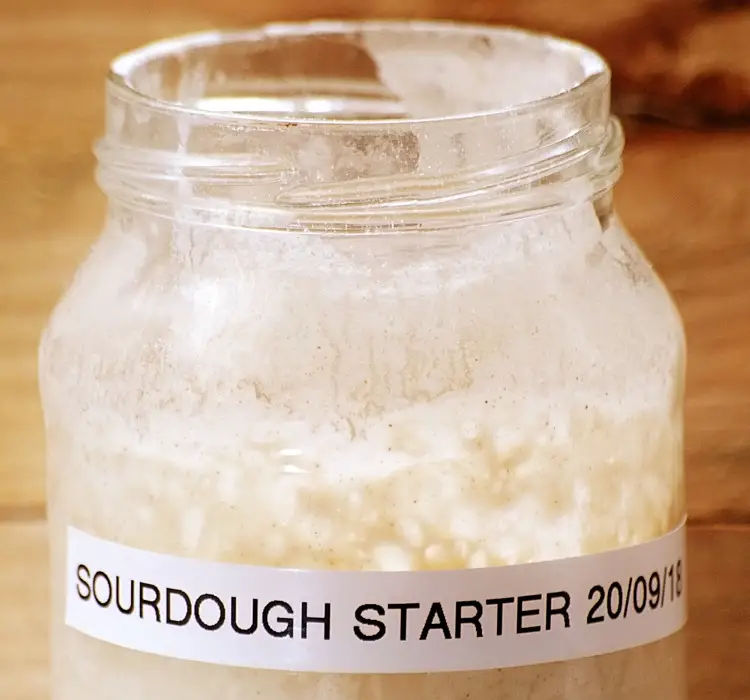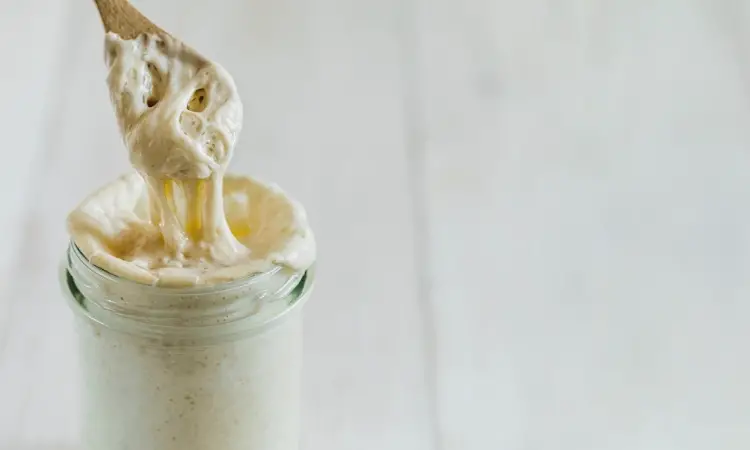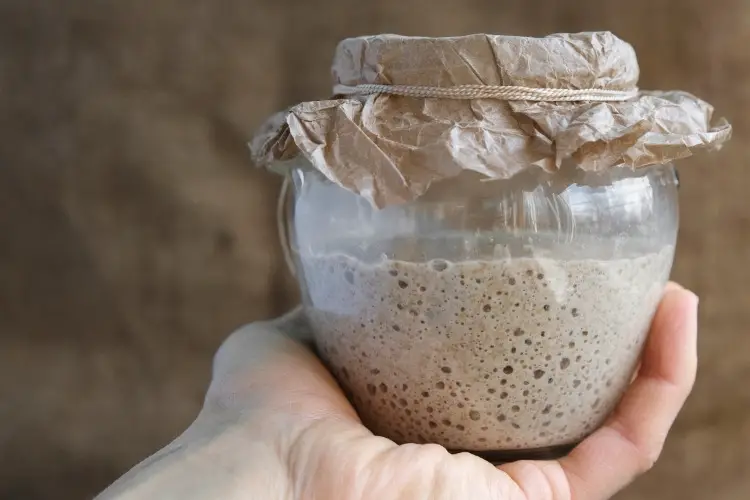If you’re running out of brewer’s yeast and eyeing your sourdough starter as a replacement, you’re not alone. This idea crops up in homebrew forums from time to time, and everyone is wondering how it will turn out.
You can brew beer using a sourdough starter, but it takes experimenting to produce the flavor you want, and the results can be inconsistent because you’re working with wild yeasts. It is not best to try it if you’re just starting out in homebrewing.
Now, just because you CAN use a sourdough starter to make beer, and many have had decent results doing it, doesn’t mean you can jump in with both feet. You’ll want to keep reading to find out what a sourdough starter is, how it is different from brewer’s yeast, and what you can expect when you use it.
What is a Sourdough Starter Exactly?
A sourdough starter is a sludgy sort of concoction that is made from combining flour and water and leaving it out to capture the natural yeasts and bacteria from the air. Once the starter has enough yeast, you can use it in place of yeast for bread making.
Because a sourdough starter is made with wild yeast and bacteria that are in your home, it is impossible to know what is inside your starter without sending it off to a lab.

If you’re interested in what your starter could have, check out this map at Rob Dunn Lab. It shows what kinds of yeast and bacteria were found sourdough starters in different locations.
Most sourdough starters contain an abundance of Saccharomyces cerevisiae and lactobacillus bacteria.
However, they will also contain a variety of other yeasts and bacteria, depending on your environment.
How to Make a Sourdough Starter?
While making a sourdough starter is simple in theory, in practice, it can be challenging.
As a society, we just aren’t used to leaving things out so that they can pick up yeasts and bacteria!
It seems like a recipe for food poisoning, but there is a long history behind sourdough starters, supporting the fact that they are safe and effective.
You’ll only need a couple of things that you probably already have on hand if you make bread regularly.
- A glass jar like a quart mason jar
- A lid or other covering for the jar
- Flour, preferably a whole wheat or rye
- Water
- Measuring cups
The basic idea is that you add the flour and water together and let it sit with the lid loosely placed on top.
You don’t want to have an accidental starter explosion in your kitchen.
Every day you discard about half the starter and replenish it with equal parts flour and water.
By the end of the week, you usually have a usable starter.
For detailed instructions on how to make a sourdough starter, you should check out King Arthur Flour’s instructions or watch this Youtube video.
The Difference Between Sourdough Starter and Brewer’s Yeast
Both baker’s yeast and brewer’s yeast contains the same type of yeast– Saccharomyces cerevisiae.
But if you’ve ever tried using baker’s yeast to brew beer (or brewer’s yeast to make bread), you know that they are not the same thing at all.
This is because brewer’s yeast and baker’s yeast have been refined over the years and use different strains of Saccharomyces cerevisiae.
The strain of Saccharomyces cerevisiae used in baker’s yeast produces a lot of CO2 to make bread rise.
The strain used in brewer’s yeast will also produce some CO2, but not as much, and it also turns malt into alcohol very effectively.
Similarly, you’ll find that the wild yeast you capture, whether it is Saccharomyces cerevisiae or not, will behave very differently from brewer’s yeast. The yeast found in brewer’s yeast is not typically found floating around your home.
So, the resulting beer will be vastly different from beer made using a brewer’s yeast.
How different will depend on the yeast and bacteria in your starter.
Brewing Beer with a Sourdough Starter: What You Need to Know

So, you know that sourdough starter is not going to behave like brewer’s yeast, but how will it behave?
Unfortunately, there are no certainties because of the unpredictability of wild yeast.
Because of this, you will need to take some special considerations into account.
Here’s what you should know before you commit to using a sourdough starter to make beer:
- Make sure it can make a decent loaf of bread. If it doesn’t, it probably isn’t going to make good beer either.
- You can add the sourdough starter directly to the malt.
- You could also make a sourdough tea and add that to the mash.
- You should drink the resulting beer sooner rather than later as it may develop an unpleasant sour flavor if you wait too long. Ideally, you should have it finished within 2-3 months.
- You can choose to add hops or not.
- If you like a sour beer, it is best to use a dry-hop method so that the hops don’t reduce the lactobacillus activity.
- You may experience issues with flocculation, but this should clear up after sitting in the bottle for some time.
Now you should be ready to get started planning out your batch of sourdough starter beer.
Just keep in mind that the best beers made using a sourdough starter takes years to perfect. It is a worthy way to spend your time if you enjoy the complex flavors of a sour beer, but maybe not if you’re strictly into lagers.
What Will Sourdough Beer Taste Like?
Probably the most pressing question you have it what the beer will taste like when it is finished. Totally understandable.
You don’t want to waste time and resources making a beer you know right from the start you won’t enjoy, and beers made with sourdough starter tend to be divisive. You love ’em, or you hate ’em.
It can be hard to describe an exact flavor for this type of beer because wild yeast throws predictability out the window, but there are some flavors you can expect to show up in your beer. (Though if they don’t, it wouldn’t be all that surprising either!)
- Beer made with sourdough starter is often described as having a “funky” or “sour” flavor.
- The flavor is usually complex and layered.
- The sourness often comes up as an after taste.
- A lot of people enjoy the funky, complex flavor of beer made with a sourdough starter, but plenty of people don’t. You are likely to love it or hate it.
- The beer may smell or taste bready.
- There may be sweetness or fruitiness among the flavors.
If a sour, funky, complex beer doesn’t sound like a good combination to you, it’s probably best that you skip brewing with a sourdough starter.
Stick to brewers yeast to avoid the funk.
Can Sourdough Starter Make Good Beer?
If the starter is good and you do enough experimenting, it is definitely possible to end up with a good tasting beer.
It can take a lot of experimenting to get the results you want, but that is the fun of homebrewing, right?
If you aren’t convinced, take a look at this article from Craft Beer and Brewing. It’s about a restaurant in Illinois called Scratch that has been making beer and bread from their sourdough starter for years. They started out using homebrew methods but soon scaled up to be able to brew for their restaurant. And people buy it! So, it has to be good.
